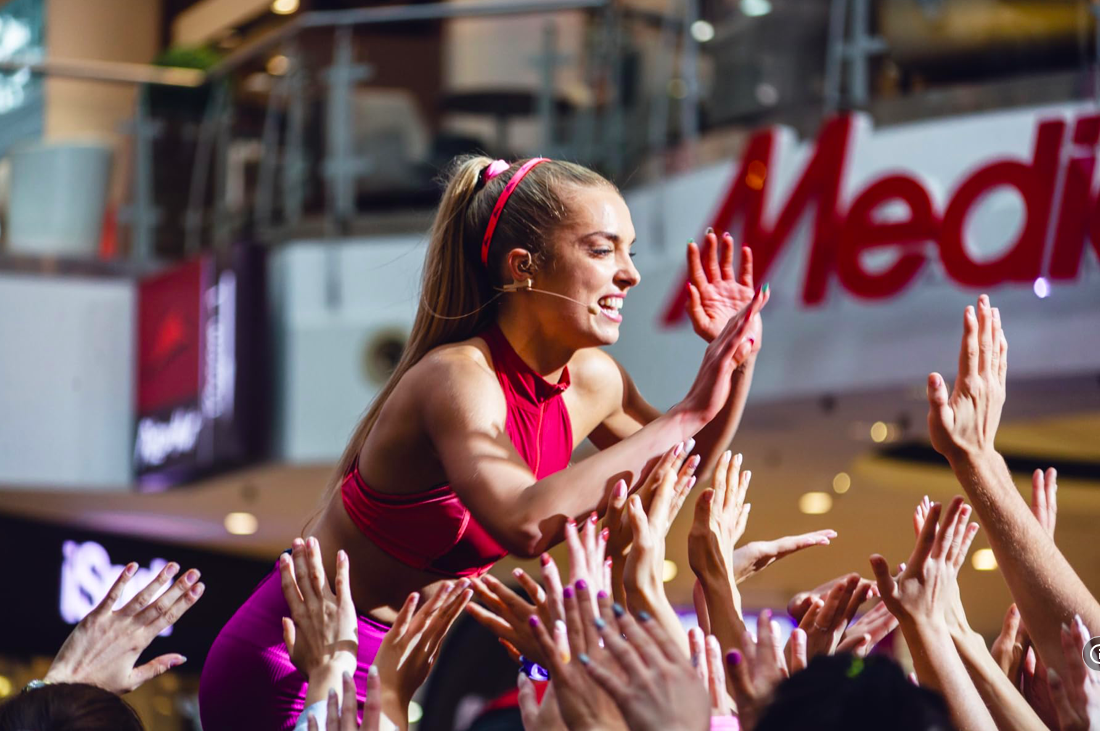OTC Rating : 4/5
Introduction
Magnus von Horn’s Sweat (2020), now streaming on MUBI, explores the paradoxical life of a modern social media celebrity. Centered around fitness influencer Sylwia Zając, the film pulls us into the curated world of online perfection while quietly revealing the loneliness and vulnerability hiding underneath. Through a restrained yet stylish visual approach, excellent performances, and precise cinematic craftsmanship, Sweat becomes a deeply affecting character study of fame, authenticity, and the desperate need for human connection.
Story & Narrative
The story follows Sylwia, a fitness guru with thousands of followers, sponsorship deals, and media attention. But beneath her bright workout routines and constant social updates lies a woman craving intimacy and truth. The film spans three days, capturing Sylwia’s emotional unravelling as she confronts her isolation, the artificiality of her public persona, and the dangers of obsessive fan culture.
The narrative unfolds slowly, more interested in the emotional undercurrents than major plot twists. Writer-director Magnus von Horn avoids judgment, presenting Sylwia with compassion and depth. Her world is sleek and saturated, but the cracks in her emotional life are impossible to ignore.
Image courtesy : IMDB
Direction & Cinematography
Von Horn directs with quiet confidence, using stillness and subtle camera work to contrast the vibrant energy of Sylwia’s public persona with her private melancholy. The camera often lingers on her face or body, observing rather than intruding, allowing viewers to interpret her moods without overt exposition.
Cinematographer Michał Dymek enhances the duality of Sylwia’s life through clever framing and lighting. Public spaces are bathed in bright, artificial lights and saturated colors, while her home is dimly lit and emotionally colder, emphasizing her loneliness. The film’s visual language becomes its own form of storytelling.
Performances
Magdalena Koleśnik delivers a powerhouse performance as Sylwia. She captures the character’s contradictions with impressive nuance—the performative positivity for her followers and the quiet desperation in solitude. Koleśnik makes Sylwia vulnerable and strong, often in the same breath, with minimal dialogue and deeply expressive body language.
The supporting cast is minimal but effective. The men in Sylwia’s life, from her manager to a creepy fan, are shown as foils to her isolation—highlighting how her relationships are shaped by power dynamics and performative interest.
Image courtesy : IMDB
Production Design & Art Direction
The world of Sweat is sleek and Instagram-worthy, but it’s also designed to be emotionally hollow. Her apartment, gym studios, and media appearances are visually appealing but feel staged, almost sterile. This design choice aligns with the film’s central theme—the contrast between image and reality.
Color plays a big role too. Bright pinks, purples, and neon tones dominate her public spaces, while the interiors of her personal life are muted and gray-toned. The art direction reinforces her emotional duality without being too obvious.
Sound Design & Music
The sound design of Sweat is carefully measured. Social media notifications, breathing during workouts, and city ambiance are all used to reflect Sylwia’s emotional state. Silence often dominates the personal moments, amplifying her inner void.
The music is sparse and restrained, allowing natural soundscapes to take center stage. When present, the score by Piotr Kurek adds a subdued electronic layer that matches the film’s sleek, modern tone without overwhelming it.
Image courtesy : IMDB
Editing
Editor Agnieszka Glinska maintains a deliberate and patient rhythm. The film doesn’t rush through Sylwia’s story but allows each emotional beat to settle. There’s a steady, observational pace that lets the viewer immerse fully into Sylwia’s state of mind.
Transitions between public and private spaces are seamless, emphasizing how Sylwia’s emotional dissonance seeps into all aspects of her life. The editing subtly guides the viewer through a narrative that’s internal more than external.
Conclusion
Sweat is a haunting, emotionally intelligent film about loneliness in the age of hyper-connectivity. It succeeds not by loudly criticizing social media, but by humanizing the people who live through it. With striking visuals, a standout lead performance, and elegant cinematic choices, Sweat is a quiet triumph.
Why Watch It:
- A powerful lead performance by Magdalena Koleśnik
- Visually sharp and emotionally resonant
- Thought-provoking look at influencer culture
- Subtle yet effective direction and production design

